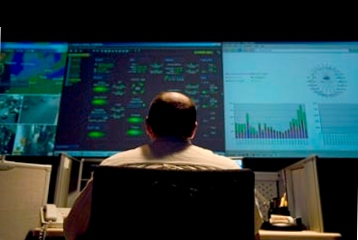Basic network change control process
Scenario: You are an engineer who runs a managed network on behalf of a customer. Your manager has asked you to create a change control process. Your customer and your manager will measure you only by the uptime or outages they experience, and … Continue reading
The post Basic network change control process appeared first on The Network Sherpa.
Huawei Starts Building Its Open Source Dream Team
 Two well-known open source experts move to Huawei.
Two well-known open source experts move to Huawei.
IS-IS vs. OSPF Part II: Small steps make steady progress
IS-IS Subnetwork Independent Operation
Continuing our journey through the land of IS-IS and hoping to reach the point where we get to understand how it actually works and the differences between it and OSPF, let’s focus today on how IS-IS is configured and why it uses both Levels and Areas.
So far, we’ve got some things cleared, as to where that odd node addressing scheme for the routers comes from, what is CLNS and CLNP and a few words on the hierarchy that IS-IS employs. To further things out, let’s go a bit deeper into the structure of the protocol itself.
The thing with IS-IS is that is Network layer independent, though the first thing we tend to do when configuring it is jump to the IP addressing. Consequently, today we’ll see how the OSI IS-IS works without configuring a single IP address, and then if we get to understand this, we can move on to the Integrated IS-IS operation
From a really high level, IS-IS operates as follows:
- Routers running IS-IS will send hello packets out all IS-IS-enabled interfaces to discover neighbors and establish adjacencies.
- Routers sharing a common data link will become IS-IS neighbors if their hello packets Continue reading
ClearPath Interview: An Introspection of NFV Use Cases & the Future of Personalized Services
 ClearPath Networks' Michael Brenner talks about the company's release of the VSP in an special interview with Roy Chua. Read now on SDxCentral!
ClearPath Networks' Michael Brenner talks about the company's release of the VSP in an special interview with Roy Chua. Read now on SDxCentral!
Rushing to the Now
Forget the (predictable) predictions for 2016. What’s here and happening right now? Perhaps, hiding behind the cloud (check) of ignorance, the rotting corpse of media disinterest or the red lit distractions of modern life, are things that may soon be obvious to all. Here’s my view of What Lies Beneath the fog, the decomposing bodies and those that […]
The post Rushing to the Now appeared first on Packet Pushers.
Rushing to the Now
Forget the (predictable) predictions for 2016. What’s here and happening right now? Perhaps, hiding behind the cloud (check) of ignorance, the rotting corpse of media disinterest or the red lit distractions of modern life, are things that may soon be obvious to all. Here’s my view of What Lies Beneath the fog, the decomposing bodies and those that […]
The post Rushing to the Now appeared first on Packet Pushers.
Worth Reading: Replacing Judgment with Algorithms

The post Worth Reading: Replacing Judgment with Algorithms appeared first on 'net work.
99 Problems and Configuration and Telemetry Ain’t Two

Isn’t SNMP just great? I love monitoring my network using an unreliable transport mechanism and an impenetrable and inconsistent data structure. Configuring my devices using automation is equally fun, where NETCONF has been subverted into something so ridiculously vendor-specific (and again, inconsistent), that each new device type (even from a single vendor) can mean starting again from scratch. Is there any hope for change? OpenConfig says yes.
Monitoring The Network
Love it or hate it (hate it), SNMP remains the de facto standard for alerting and monitoring. I think we cling on to SNMP as an industry because we’re scared that any replacement will end up being just as clunky, and we’d simple be putting expensive lipstick on a particularly ugly pig. If we want to get rid of SNMP, whatever comes next will need to bring significant benefits.
Configuring the Network
If you’re dedicated to making changes manually, it’s likely you don’t care much about the mechanisms currently available to automate configuration changes. However, I can assure you that writing scripts to make changes to network device configurations is a frustrating activity, especially in a multi-vendor environment. I should add that I consider automating CLI commands and screen-scraping the Continue reading
Take them seriously — you could change the world

We often think that because we’re engineers, squirreled away in the basement suite (we used to have a fireproof suit hanging in the basement elevator as a little joke on the IT world at one job), we can’t have a huge impact on people. Or maybe it’s because you don’t think you’re famous enough — you don’t have a blog, several books published, multiple speaking engagements, and you don’t work for some big vendor. Whatever the reason for thinking you don’t — or shouldn’t — have an impact in someone’s life, let me say this.
You’re wrong.
The impact of one person can hardly be underestimated; from a book I read recently, for instance:
I turned and walked out of his office, closing the door with the characteristic rattle of the frosted glass pane. Though I could not have put it into words then, I was a different person from the one who had walked into that office ten minutes earlier. A person for whom I had the highest regard had taken me seriously. If he thought I was worthy of an hour of his time every week, then just maybe I was worth something. -Michael Card, The Walk
The Continue reading